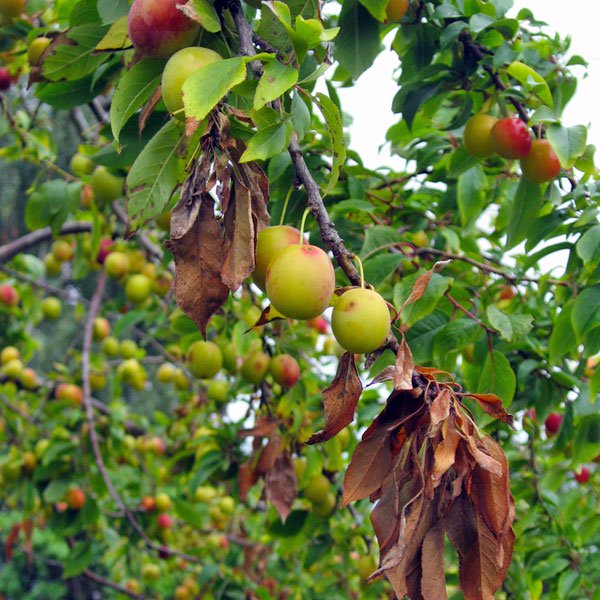

Droplets of bacterial ooze can form on twigs within three days after infection. Infection also can take place through natural openings in leaves (stomata), branches (lenticels), pruning wounds, insect feeding and ovipositing, and hail. When the bacteria invade and kill the cambial tissue of the branch, all flowers, leaves and fruit above the girdled area die.

From the flower, the bacteria move into the branch. Once in the blossom, bacteria multiply rapidly in the nectar and eventually enter the flower tissue. Bacterial ooze splashed by rain can also spread the pathogen. Insects such as aphids, ants, bees, beetles, and flies, are attracted to this ooze, pick up the bacteria on their bodies, and inadvertently carry the bacteria to opening blossoms. Masses of bacteria are forced through cracks and bark pores to the bark surface, where they form a sweet, gummy exudate called bacterial ooze. In spring, when temperatures frequently reach 65 F, the bacteria multiply rapidly. The bacteria overwinter in blighted branches and at the edge of cankers (areas of bark killed by bacteria) (Figure 1). Disease Cycleįire blight is caused by the bacterium Erwinia amylovora. Hot summer weather generally slows or stops the disease. Hail and wind damage provide wounds that allow the pathogen to enter at other times. Blight of twig terminals can occur in late May through June during wind driven rain events. Warm rainy springs are particularly conducive to rapid spread of the pathogen, resulting in blossom blight. The disease is most serious when spring temperatures during pre-bloom and bloom are warmer than average. The disease also can occur on serviceberries ( Amelanchier spp.), flowering quinces ( Chaenolmeles spp.), cotoneasters ( Cotoneaster spp.), hawthorns ( Crataegus spp.), quinces ( Cydonia spp.), pyracanthas ( Pyracantha spp.), blackberries ( Rubus spp.), raspberries ( Rubus spp.), and mountain ashes ( Sorbus spp.).ĭisease incidence varies from year to year and severity is influenced by cultivar susceptibility, tree age, succulence of tissues and spring meteorological conditions. It is especially destructive to apples ( Malus spp.), pears ( Pyrus spp.), and crabapples ( Malus spp.). Management includes resistant varieties, cultural practices, pruning and preventive chemical sprays.įire blight is a bacterial disease that affects certain species in the rose family (Rosaceae).Fire blight bacteria can be spread by insects, splashing rain or contaminated pruning tools.Symptoms include dead branches, water-soaked blossoms, light brown to blackened leaves, discolored bark, black “shepherd’s crook” twigs, and dried fruits.Fire blight is a bacterial disease that can kill branches and whole plants of many members of the rose family, including apple, pear, quince and crabapple.


 0 kommentar(er)
0 kommentar(er)
